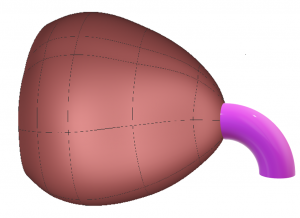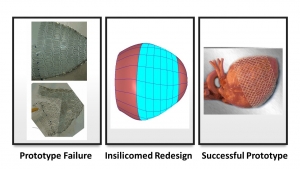Cardiac Restraint/Ventricular Assist Devices
Heart failure is one of the most common forms of heart disease. Patients suffering from congestive heart failure are unable to pump blood at levels required to adequately support bodily function and often develop symptoms including fatigue, shortness of breath, chest pain, edema, mental confusion and organ failure. Currently, there are three main types of therapy available for these patients –pharmacologic treatments, cardiac assist devices, and cardiac transplantation. Drug therapy is often ineffective and the supply of donors for transplant is highly limited. In the most severe cases, the heart may be severely enlarged and left ventricular ejection fractions may be reduced from normal values of 55% down to 20% or lower.
To prolong life as patients wait for transplant and to improve the quality-of-life in end-stage heart failure, ventricular assist devices have been utilized. These include mechanical pumps used to increase cardiac output. And, they include passive restraint devices where sleeves are implanted around the heart to help return its shape to a more normal geometry. More recently, mechanical devices that avoid blood contact have been proposed and deployed in experimental studies. Insilicomed has been tasked over the last decade with analyzing the effectiveness of all these methods (Contact Insilicomed for more information…


